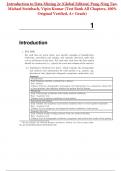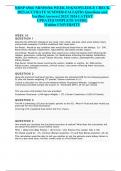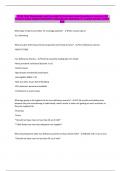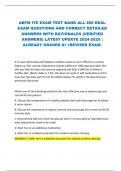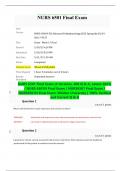Tentamen (uitwerkingen)
Test Bank for Introduction to Data Mining 2nd Edition (Global Edition) By Pang-Ning Tan, Michael Steinbach, Vipin Kumar (All Chapters, 100% Original Verified, A+ Grade)
- Vak
- Instelling
This Is Original 2nd Edition of Test Bank From Original Author. All Other Files in the market are fake/old Edition. Other Sellers Have changed old Edition Number to new But Test Bank is old Edition. Test Bank for Introduction to Data Mining 2nd Edition (Global Edition) By Pang-Ning Tan, Michael...
[Meer zien]
